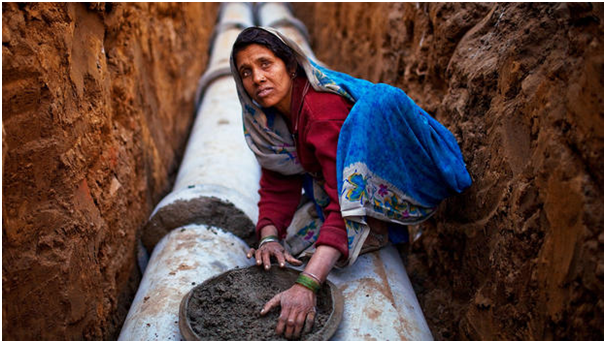Happy Women's Day But Give Us the Right to Pray Too!

NEW DELHI: As the world celebrates International Women’s Day, Indian women are still fighting for the Right to Pray. On March 7, Activist Trupti Desai along with other members of her Bhumata Brigade almost 30 km away from the Trimbakeshwar temple. The brigade was marching towards the temple in Nashik to enter into its inner sanctum, to oppose the decades-long ban on the entry of women.
The pertinent question is, why women have been banned from the entry? Is it based on traditions? Does it follow any pertinent treatise of Hinduism or is the ban a reflection of the patriarchal Indian society? The Trimbakeshwar temple is one of the important Shiva Temples, one of the 12 ‘Jyotirlingas’ in the country.
The opposition to this ban is not nascent. Last January, Desai and her brigade members had demanded entry into Shani Shingnapur temple in Ahmednagar district. According to them, the ban is not constitutional and it is against the Freedom to Pray and worship. Though, the Chief Minister of Maharashtra had openly supported the right to pray for women, he has been silent regarding the current Trimbakeshwar Temple incident when the activists have been detained and assaulted.
“There is no case in any court either, so they cannot use that excuse. So I request the chief minister that they should deploy more police and allow us the entry. I would like to say to Hindutva groups that I am Hindu too. This is not a fight of religion or of god, this is a fight for women's rights,” Trupti said. At the same time Muslim women are protesting against the decision by the Haji Ali Dargah trustees to ban women from entering the shrine.
The Bharatiya Mahila Muslim Andolan has held several protests demanding the ban be lifted with Zakia Soman wondering at what had prompted the men to take this decision. More so as entry was allowed till recently. The right to pray is thus, being fought for by the women even as March 8 is celebrated as the day of empowerment across the world.
Maharashtra State Commission for Women’s chairperson Vijaya Rahatkar stated “In our culture, equal status has been given to both men and women… this is the same for worshipping gods also. The women can worship god as men do. We feel that society must work in accordance with this and provide equal opportunity to all.”
Meanwhile, it is interesting to hear another narrative from a women trustee of the religious establishment. They believe that this entire march to enter into the inner sanctum is just a publicity stunt. The ban has been an age-old tradition and it has never been questioned. This shows how scattered the enter fraternity of women itself is, a reason why the marches are not able to win their way. Several right-wing organizations such as Sharada Mahila mandal, Mahila Dakshata Samiti and Purohit Sangh are also against this march.
It is also quite ironic that women are allowed to enter the Kashi Vishwanath Temple in Varanasi, which is also dedicated to Lord Shiva. So, it becomes a little difficult to understand why such stringent rules are being followed at Trimbakeshwar Temple.
In February 2016, the Supreme Court questioned the banning of entry of women into the Kerala’s Sabarimala temple, and debated whether these man-made regulations should be followed because ‘God as such, does not discriminate between men and women.’ Nevertheless, concrete result is still much awaited.
Though, it’s quite unfortunate and a blowback to the demand for equality, that such kinds of customs still continue to be prevalent in India. It not only further deepens the discrimination ingrained within religions but also tries to high-handedly impose its own superstitions and beliefs. So, this women’s day, do Indian women have enough equality to rejoice? Well, perhaps not! But rejoice we still will, as victory while still elusive, is certain.



